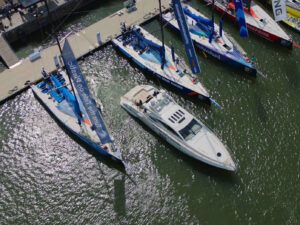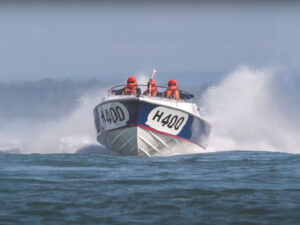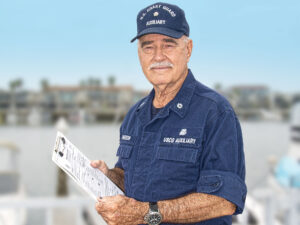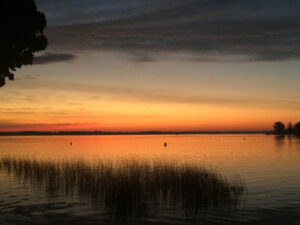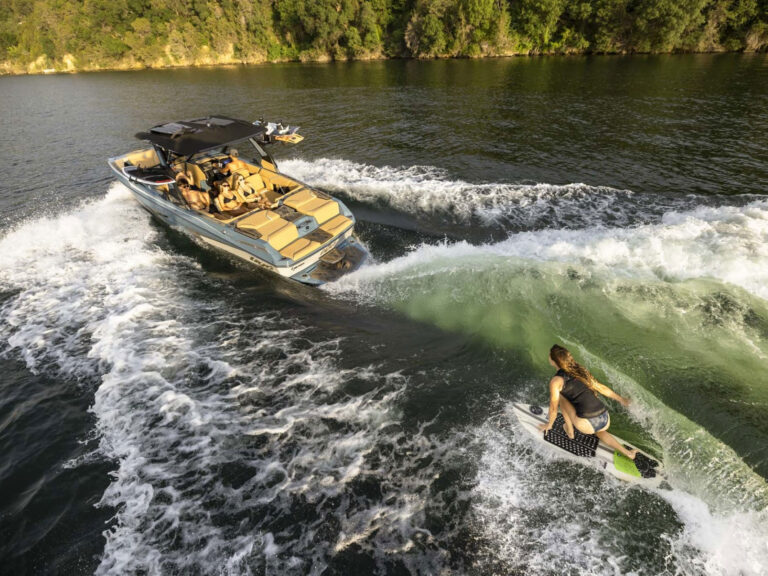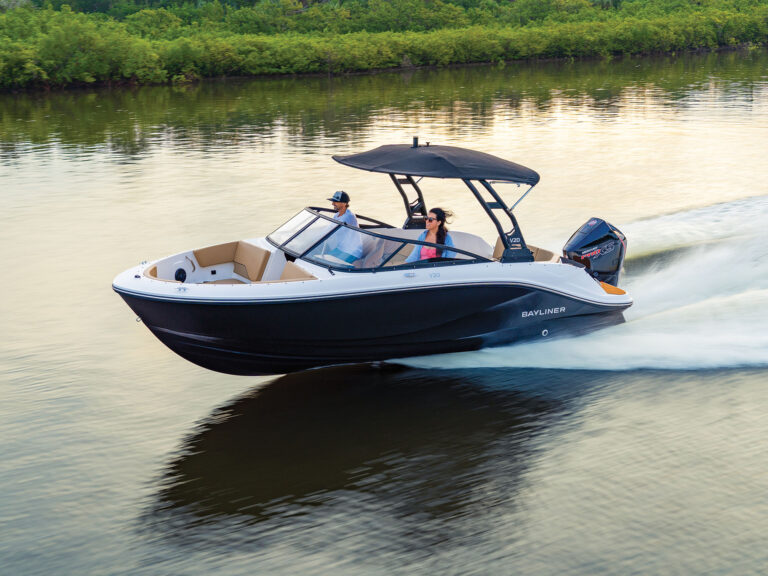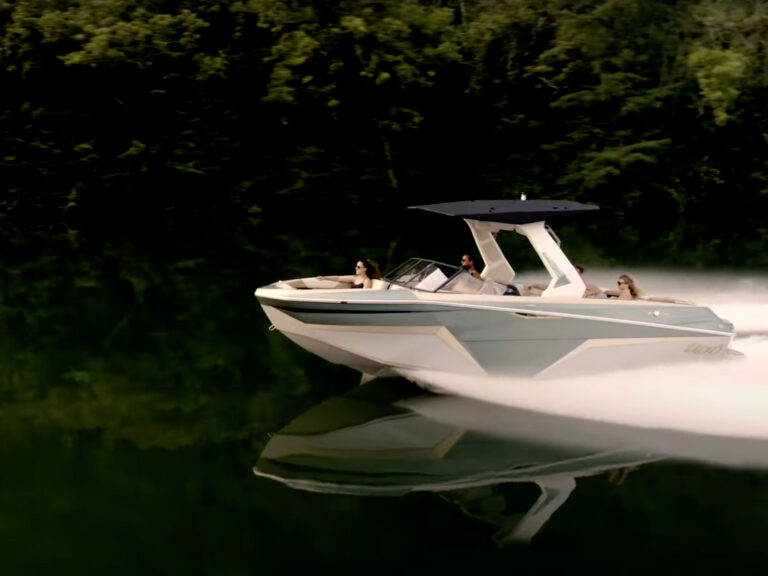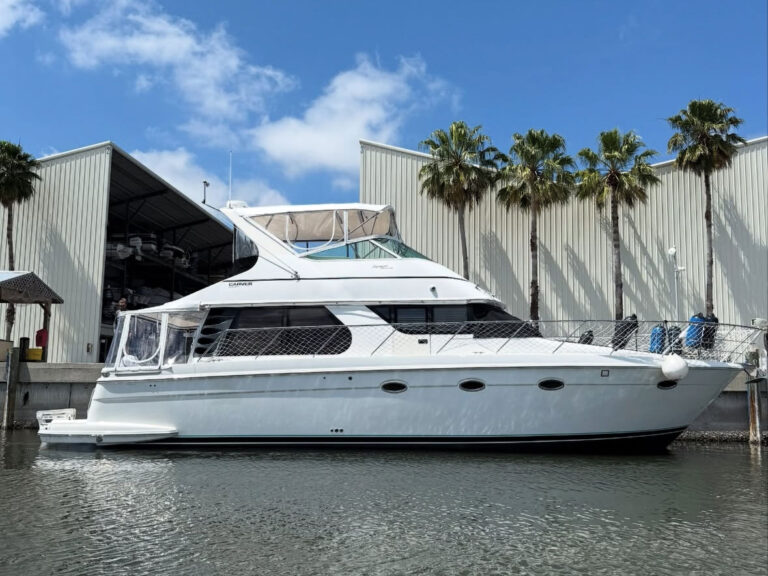I’m from the “don’t approach a dock any faster than you’d like to hit it” school of close-quarters maneuvering.
But there are times when we need a burst of power to dock our boats. The idea is to briefly increase engine speed for enough time to increase prop speed, without having much effect on boat speed. In the context of the following tips, burst can be defined as skosh, tad or dollop.
Crosscurrent
Docking in a crosscurrent is like trying to ice skate across a slope. Approach from the down-current side if possible, wheeling the helm to keep the boat parallel with the slip and, as the boat vectors, angling toward the slip. With your bow between the poles, apply throttle. The burst should be short: Its force will carry the boat forward after you’ve shifted to neutral. But too little will leave your bow (or stern) held in place while the other end of the boat is pulled down-current until you are at 90 degress to your objective — not a pretty sight. Naturally, a countering burst of reverse will be needed, applied with equal finesse.
Using Bowthrusters In Non Docking Situations
Reverse Turn
Often, a tight turn is required to use a slip in a marina with narrow fairways. Use a burst of forward to come around in a short arc and you’ll kick the stern around, likely bumping into the boat beside yours. Instead, use prop torque in reverse to turn into the slip.
Approach the slip at 90 degrees, coasting in neutral. When the bow is even with the slip’s center, cut the wheel hard over and then instantly apply a burst of reverse power. Don’t throttle and turn at the same time! The boat will pivot 90 degrees and let you motor straight in.
Back Against the Stream
When backing against a current, you have to turn quickly to line up. Sitting broadside to the current spells disaster. The force of the water is amplified against the broad expanse of the transom, versus the hydrodynamic bow. Apply enough power to make way against the stream and then lay off the throttle, allowing the current to slow the boat. With the current pushing you into the slip, use enough forward power to stem the current and maintain control of the boat — coming off the throttle, incrementally, in metered amounts allows the boat to fall back between the pilings.
Practice
Knowing how your boat responds to bursts of power is an essential component to confident docking.

